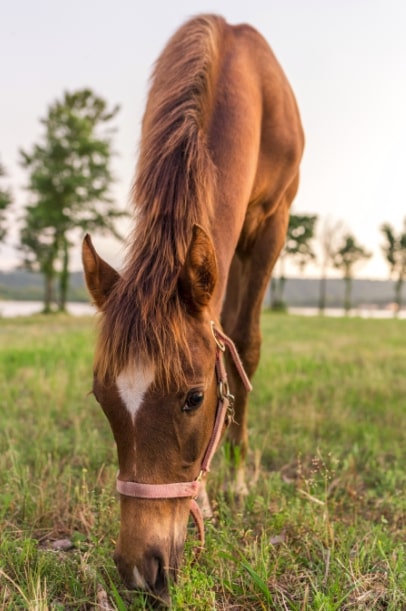Situations will come up that force your horse to alter its workload. By pinpointing and understanding these times, you can better prepare with altering your horse’s diet. You may need to choose a different type of horse feed to ensure you aren’t giving the horse too many calories during quieter periods.
If you show seasonally, your horse will likely undergo periods of intense work when competitions take place. During the off-season, schedules may be more sedate. Trail riders tend to ride harder in the spring, summer, and autumn seasons. When the winter arrives, they take a break due to unfavourable weather. There is also the unfortunate situation of injury leading to limited turnouts and stall rest.
Pick the right feed
With feeding horses, hay acts as the cornerstone of their nutrition. Always pay attention to its importance. If you have any concerns, discuss them with a nutritionist.
There are a lot of individual feed options for your horse when they are on a reduced workload. Examples are standard pellets, high-fat pellets, and textured feed. They all come with their own distinct characteristics. It is necessary to select the feed type that aligns with your horse’s particular needs and preferences.
Weighing feeds
It is also necessary to weigh your horse feed accurately. The accurate measurement is integral to providing the correct level of nutrition.
Everyone has their own method of measuring. Yours could be a coffee can, cup, or scoop. However, it is critical to establish exact measurements to guarantee consistency. It is here where utensils such as a scoop or shipping scale can be useful. Accurate measurements result in precise nutrition.
Adapting the diet
You will need to adapt the diet for horses with a reduced workload too. There is a common misconception here. It’s that you need to substantially minimise feedings. This is when your horse experiences a big dip work or stall rest. Things aren’t like this though.
What you need to do is modify the feed levels based on the horse’s activity level. Look at the feed tags and their feeding instructions. They tend to state recommended levels for light work or maintenance. By sticking to these guidelines, you will make certain that your horse gets the right amount of nutrition without weight gain.
Using diet balancers
This can be a good idea too. Some people call diet balancers the superheroes of horse nutrition when there are reduced workloads. These balanced and highly concentrated horse feed options provide all the essential nutrients. They do so without also adding excessive calories.
Diet balancers are particularly advantageous for horses on light work or stall rest. They help them maintain their muscle strength, hoof condition, and hair coat. By introducing a diet balancer to your horse’s feeding schedule, you will keep them in great shape.
You must take the time to understand your horse’s shifting workload and choose the right feed. Furthermore, you need to measure things accurately and utilise diet balancers when necessary. This way, you can make certain your horses are gaining the optimal nutrition at every stage. With a well-fed horse, you get a healthy, happy horse.
Buy quality horse feed
At JS Hubbuck Ltd, we have a great range of feed options. With these quality products, you will have an easier time keeping your equestrian friends in good condition. That will be the case regardless of the level of activity.
If there is anything we can do to help with horse feed, feel free to get in touch. We can provide details about any of the products we offer, including ingredient info.

